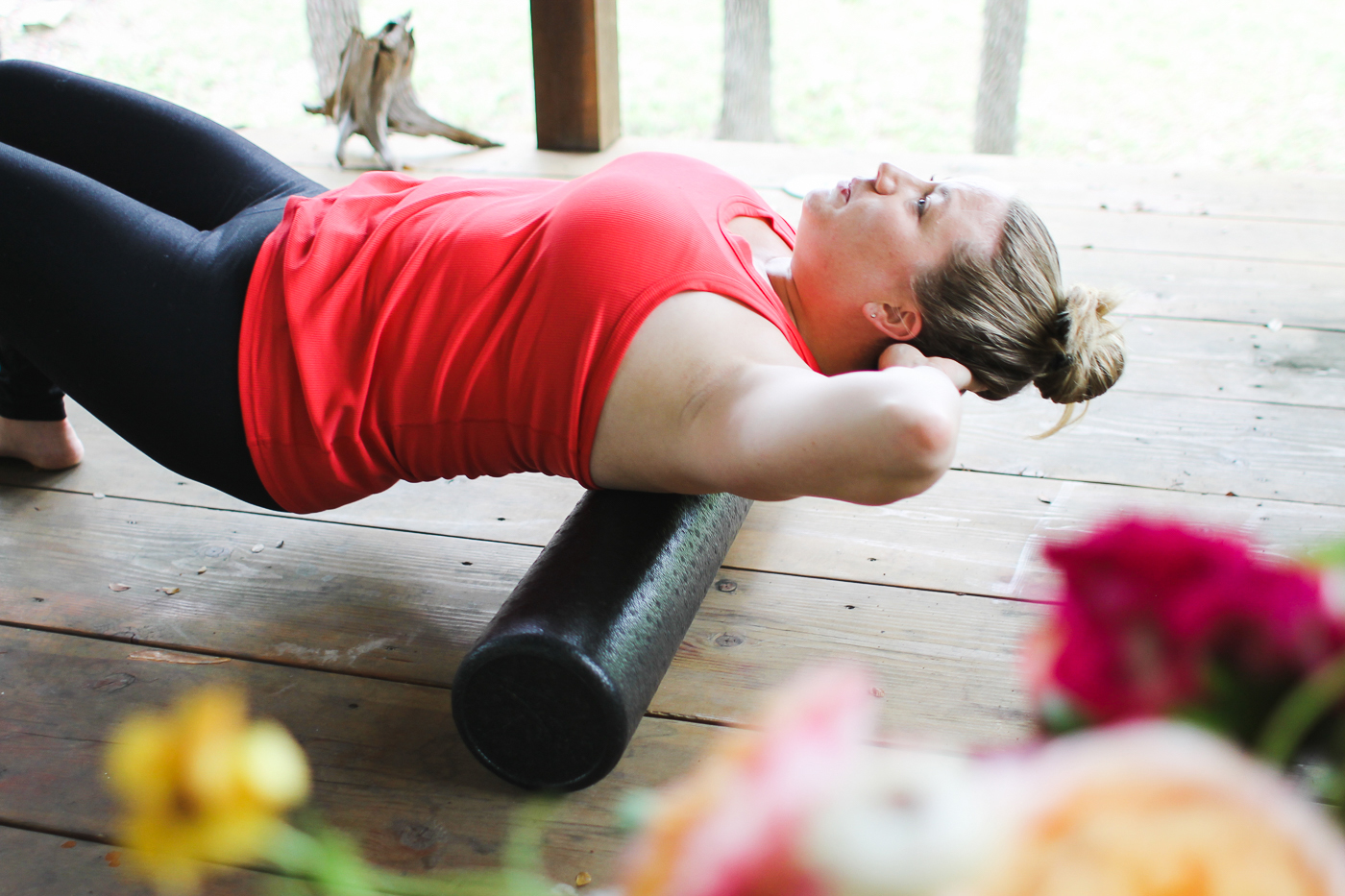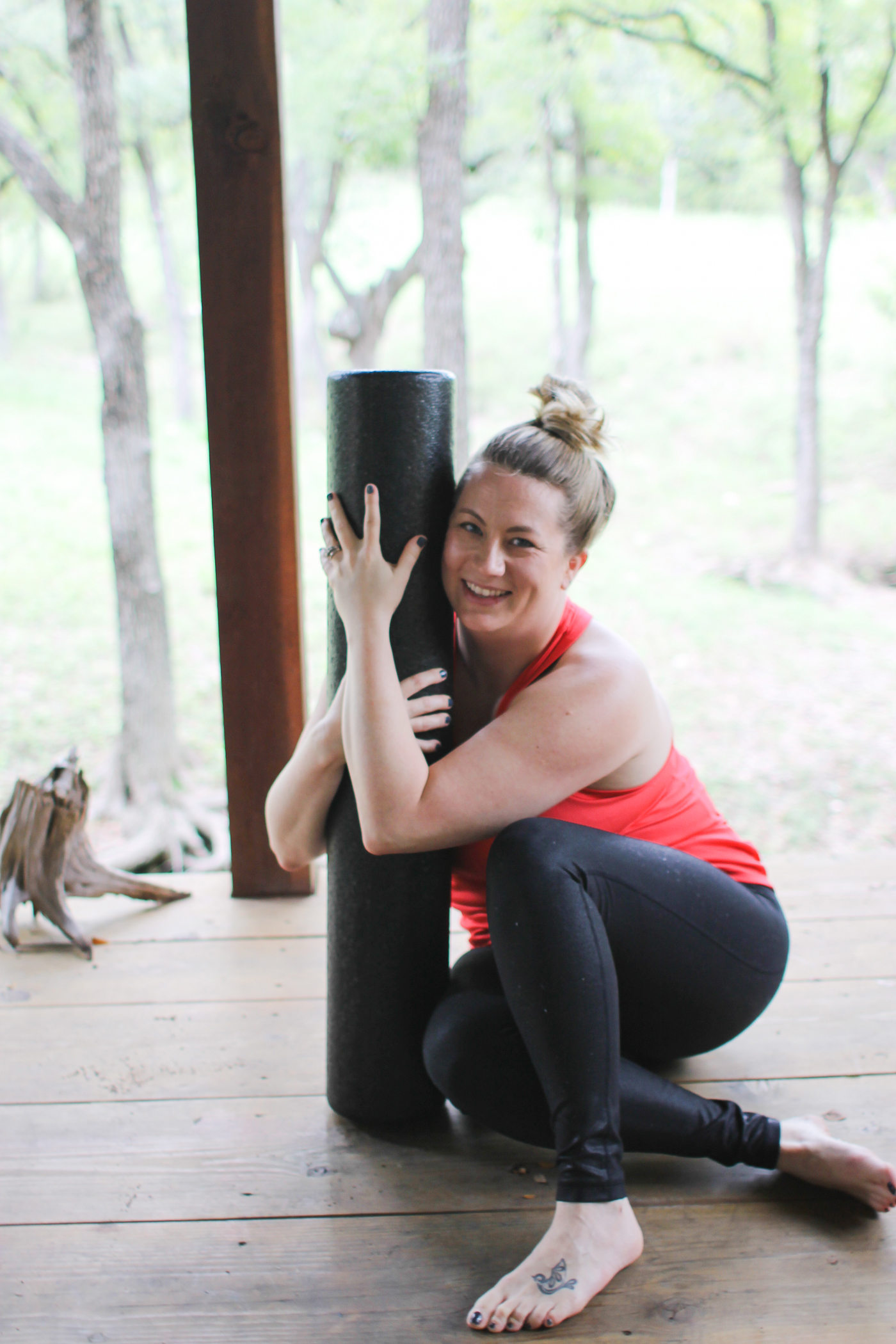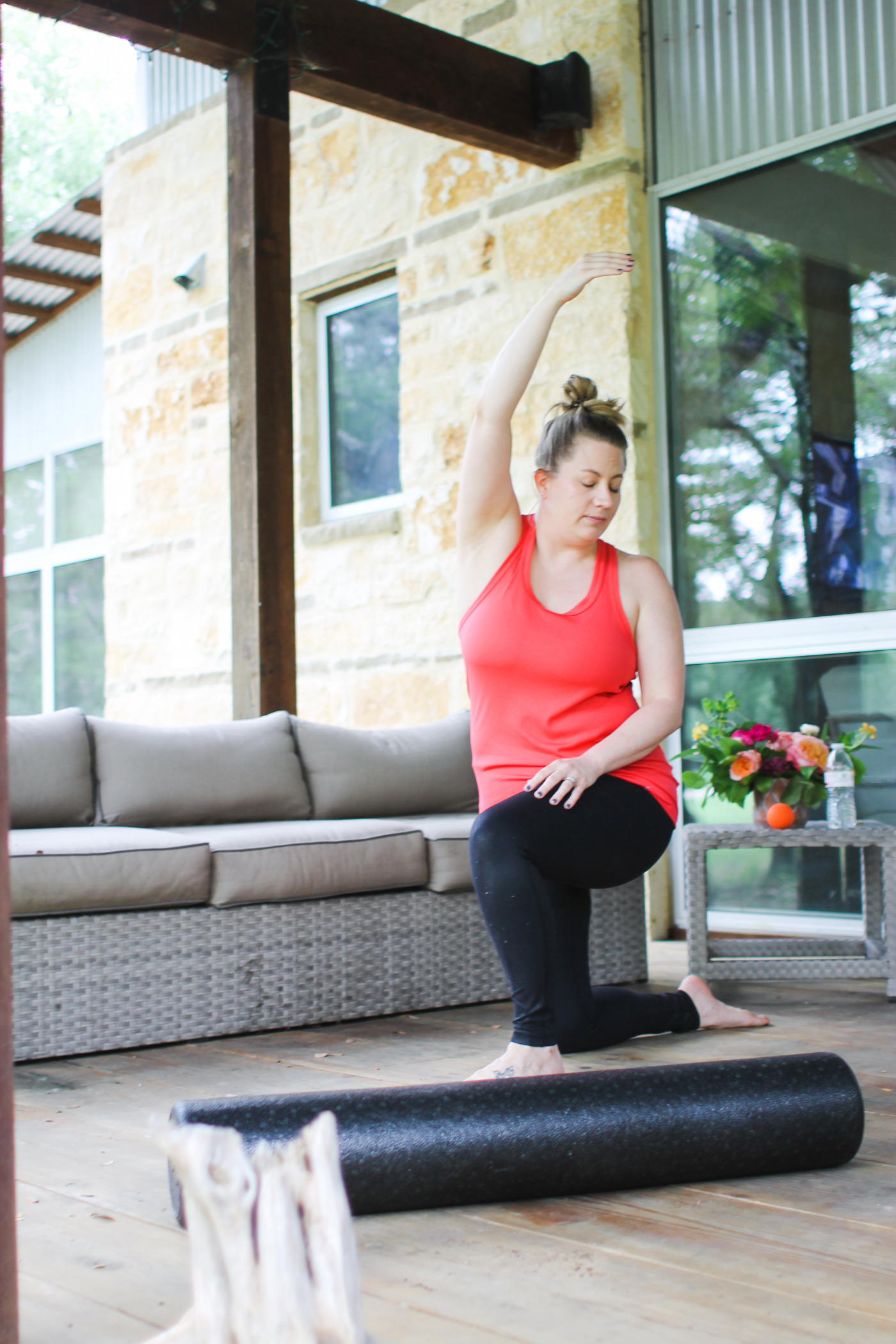Hi, my name is Skye, and I have had some back issues. And then a friend introduced me to Airrosti, and now I’m in love with it. I know that might sound dramatic, but just hear me out. Here are five things I wish I had known before my first Airrosti appointment!

A couple of weeks ago, I was getting dressed and I’ll be honest, it was my first time putting jeans on since I found out I was pregnant in July. I’m not even kidding. I had been living in leggings, dresses, and joggers since that day and I was okay with it. But I finally had to get dressed, like actually dressed, for our weekly small group meeting at church so I thought I’d go the extra mile and put on jeans. I really do love those folks at my small group.
Anyhow, that is how I hurt my back the first time. It felt like maybe I pulled a muscle, or just tweaked it, and it settled in a huge, stabbing pain knot between my right shoulder blade and my spine, that radiated across my entire back when I did things like turn my head, look down, or you know, breath. Super convenient.
I took some ibuprofen (because that is my go-to for everything) and just took it easy for a couple of days. It actually felt a lot better by Saturday and I figured everything was fine. Then, Sunday morning, I had the sheer audacity to make my bed. I know, I should just not make my bed, but my brain doesn’t work until my bed is made. Anyways, I tossed a pillow from my bed to the bench, and this small movement aggravated it, and this time it was worse.
Airrosti Treatment

I had to teach Sunday School that morning and even though I was in quite a bit of pain, God does go before does He not? I ran into my husband’s co-director Julie and she noticed I was walking funny. I told her what had happened, and she said, “You know, I had this treatment done a few years ago called airrosti – you should see if you can find a place around here that does it!” She also said it hurt, really bad, but that it fixed her issues. At that point, I was willing to try anything that didn’t mean taking more ibuprofen or pain medicine to get back to my normal self.
Knowing it hurt before I went was helpful, but here are a few more things that I wish I had known!
1. Here’s a typical appointment.
On your first appointment, your provider will talk with you about the location of your pain and go through a series of exercises so they can diagnose where it is and what the best treatment will be. Dr. Wilson did some range of motion movements (rotating my right arm in a full circle, looking up, down, left, right, he checked my rib cage to be sure it wasn’t one of my ribs jabbing me in the back, etc.) This took maybe five minutes. He showed me on his framed anatomical photos all the possibilities it could be, and what it likely was, so that I could see all the other muscles and attachments that were being affected by it. Y’all, he used an expo marker on the glass and I was mystified by this. Why don’t more doctors assess issues and explain a diagnosis this way? Brilliant. (Doesn’t take much to impress me, clearly.)
First comes the torturous part of the treatment, best described as the worst, but most effective, deep tissue massage I’ve ever had. I hate massages, so I’m probably not the best judge of that. I’ll get more into the details below, including pain level. It lasted probably 15-20 minutes. Part of it was lying down, part of it sitting up. I could tell you more, but honestly every treatment is extremely injury specific, so you could go and have a completely different experience. Be sure to wear loose fitting clothing that they can lift up or put their hands under, because I can’t imagine that doing this over a t-shirt would have been effective. I wore leggings, a sports bra, and a workout tank top on all three of my visits and it worked out great.
Once the good doctor had finished torturing me doing the soft tissue work, I met with Keisha, who went over some exercises that I could do to continue improvement and healing at home. They are low impact movements that are designed to engage and smooth out the soft tissue. She gave me different exercises after each visit but they consisted of things like foam rolling, using a lacrosse ball to roll on, pull backs with a resistance band, and some simple stretches I can do anywhere. She went over them with me a few times to make sure I was doing them correctly. She also used kinesiology tape (or k-tape) on my back to help stabilize and help with swelling and inflammation. She said it would feel like a hug, and honestly that is exactly what it felt like!
The entire appointment took about an hour and there was no wait time when I arrived which was really nice, considering we are all conditioned to wait at a doctor’s office.

2. It hurts, but it hurts SO GOOD.
Each of my visits was a little different, based on the location of my pain and the work they had already done to improve it. But the one thing that happened each time was that it hurt. In the best way possible, but it still freaking hurt.
On the first visit, I spent most of my time with my face stuffed in a tiny hole in the table so I couldn’t see what was happening, but my best guess was that he had his entire body weight acrobatically balanced on his thumb while it pressed down on the most painful part of my back. He also started at my lower back, and worked his thumb (finger, hand? I don’t know, I was “breathing through the pain”) all the way up to my neck on my right side, and I swear I could feel parts of the knot that was tied in my back being pushed up and out of my neck. Then he had me sit up in a few different, specific positions and that is when he found the actual knot in my back. I honestly asked him if anyone has ever passed out from the pain, because I was feeling a little light headed.
On the second visit, I thought I was mentally prepared for the pain because I had an idea of what to expect. Partly, this was true, but nope. This time was different kinds of pain in different places than the first visit. First, he worked on my right shoulder (which is where I carry a LOT of my stress and tension) and at one point, it felt like someone was pouring molten lava into my shoulder. I think maybe I screamed and said that hurt, expecting him to say “oh, sorry!” and stop. But no, he just held his grip there. It did eventually go away (and honestly, it felt SO much better right after that), but it did teach me that they will not stop because it hurts, they will stop when it quits hurting, because that is what they do. So, keep that in mind dear friend. He found a tender spot in my neck, right in that soft spot at the base of my skull, that literally made me curl up in as much of a ball as I could without moving. I couldn’t even say that it hurt this time, but honestly I did not have to. He just held his thumb there until my body relaxed, which took approximately three hours in my head (but realistically, maybe a minute or so).
By the time the third visit came around, I was mentally prepared for the amount of pain and types of treatments I would get. I knew it was going to hurt, and that he wasn’t going to stop something because it was hurting, and going into it with that mindset was very helpful. Also, knowing that afterwards I would feel even better than I already did made it even easier to cope with it. I could even almost talk through the pain, and not just breathe and cuss silently through my gritted teeth. Much improvement.
Here is the deal – while the pain is real, and intense, it is extremely short-lived and I have quite honestly NEVER felt less tightness in my upper back, shoulders, and neck in my entire adult life. I feel like he worked some things out of me that have been hiding in there for years. So the few minutes of intense pain were absolutely worth it for me. I’m not telling you about it to scare you away, but you should mentally be prepared for it so that you aren’t somewhat blindsided by it when you go.
3. Opt for ICE over HEAT.
The day after my first visit, Dr. Wilson texted to check on me which I thought was a nice touch. I told him I was feeling much better and currently sitting on a heating pad while I was working. And here is what he said: “I wouldn’t do the heating pad honestly. It can cause more inflammation and slow down the healing, especially since I just worked on it. Recommend ice right now.” Well, thanks for blowing my warm and cozy heating pad dreams right out of the water. For my entire life, I’ve always thought that a heating pad was just the best treatment for sore muscles. (This will probably just reveal how little I know about physiology). In my head, heat makes things relax, and ice makes things contract and it seems that kind of the opposite is true. So I asked him to expand on this a bit when went back on my second visit.
After being tortured worked on, your muscles are still pretty inflamed and heat therapy increases the blood flow to that area, which can increase inflammation. Cryotherapy (also, an ice pack), helps by restricting blood flow, which decreases inflammation. And guess what you guys – he was right. I changed out to an ice pack and it did help! (I’m not that surprised, but they haven’t invented a sarcasm font yet, so just go with me.)

4. Do the exercises!
I cannot stress this enough: DO THE EXERCISES! The treatment you receive in the office is only half of the equation. The exercises that they give you to do at home are just as important and work hand in hand with the treatment. They are very injury specific and designed to continue to gently work the muscle and continue the soft tissue therapy. I want to say that I was 100% faithful to this statement, but then how would I be able to tell you how important it was?
After the first treatment, I had one full day before my second treatment. And I’ll be honest, I did the exercises once during that 24 hour period. I was still hurting pretty bad and the exercises just didn’t feel GREAT. But, after the second appointment, I did them twice a day, and rolled on that dang lacrosse ball three or four times a day. And, no surprise, it did actually make it better, faster. I mean, there has to be a reason that you are supposed to continue therapy at home, and that must be it.
I also started going back to Jazzercise after the second appointment and during the strength portion, just focused on getting movement in my back and stretching it out and I think that also had a huge impact as well. So don’t be afraid to go back to your workout routine with some modifications to help heal your injury.

5. It’s affordable, but check with your insurance.
I was shocked to find out that my insurance did cover this treatment. Airrosti has only been around for a few short years (less than 20!) so it seemed a little too “woo-woo” to be covered. Even if you have a high deductible plan (where you pay 100% out of pocket until you meet the deductible) they will give you an estimate of your costs before you are seen for your first appointment. From what I understand, they will have a contracted rate with your insurance company and have a maximum out of pocket charge. Mine was $225 (although I was only responsible for the copay), but considering how much an MRI costs, as well as potential surgery or a long, drawn out pain treatment program, I would have gladly forked over $675 for this treatment.
Additionally, if you go to your first appointment and after the initial assessment they determine that Airrosti is not going to work for your specific injury or pain, or if you decide that you do not want to go through with it, they will not charge you for the visit. So at the very least, it is completely worth checking out!
6. Communicate!
Oh hi, bonus point, because I can never do just what I originally start out to do. Communicate with your provider. (I mean, this point goes with any medical provider honestly) Tell them if something hurts worse or if the pain has moved or if you have questions about the exercises or if the k-tape is making you itch. While they are excellent at what they do, they can only do what they do based on what you tell them. So speak up! If you’ve been three times (which is their average number of appointments for a patient) and you still have some lingering pain a couple of days later, call them and make another appointment! You will have much better results overall if you are just completely honest with them. I often forget this and don’t want to hurt anyone’s feelings or inconvenience them (or, embarrass myself), but I’m working on getting better at it. I’m paying for this service so I should get 100% of the benefits it offers, right?
What other questions do you have about airrosti that I may have missed? If you’re in the Woodlands/Spring area, I highly recommend Dr. Brian Wilson at the Airrosti Waterway/Houston Spine & Rehab offices! Tell him I sent you there to be abused treated. 😉
